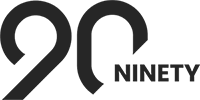6 Ways to Improve Team Efficiency [and Effectiveness]
Productivity experts often credit healthy worker engagement as a critical factor in improving team efficiency. Yet, it’s harder to inspire full-on efficiency if 85% of your team members are either not engaged or actively disengaged at work, as Gallup’s recent State of the Local Workplace report indicates. Inspiring efficiency requires fresh thinking around how to engage your team so your organization can outperform the competition by 200% or more. The key is to consider effectiveness versus efficiency.
That’s where Ninety can help.
This list provides proven ways to use Ninety to improve team efficiency (and effectiveness), whether working remotely, at the office, or in a hybrid work environment. You can transform your team's efficiency and effectiveness by understanding what makes the team efficient, establishing performance metrics, and creating a custom action plan using Ninety’s tools. You’ll also join the increasing number of users experiencing a 50% company-wide improvement in year-to-year growth as a result.
What makes a team efficient?
Team efficiency relates to how a team executes tasks. Team members accomplish more with less time, effort, and resources when they work efficiently.
Most teams strive to be efficient. But they also want to be effective, which relates to the quality of a team's results. When team members work effectively, they consistently reach their goals and objectives.
Efficiency and effectiveness affect productivity in different ways. It’s possible to:
- Work efficiently and be ineffective. Like the team member who invents a way to respond to emails more quickly but doesn’t include the necessary information in the communication. It means they may be rushing through the work with less attention to the quality of the finished result.
- Work inefficiently and still be effective. Like the team member who writes a report that can help the team make informed decisions but misses the deadline to deliver the valuable data to the group. It means they can achieve high-quality results, but they’re not making the most out of their working hours.
It’s easy to see why leaders always look for the right balance between team efficiency and effectiveness. There’s little reason to achieve more with less time, effort, and resources if the work is below standard and (still) behind schedule. Companies attain the sweet spot for productivity by creating and nurturing a work environment that values both efficiency and effectiveness.
How do you establish the appropriate team efficiency metrics?
Many leaders develop and implement key performance indicator (KPI) metrics using the Measure-Perform-Review-Adapt (MPRA) framework. According to KPI.org, it gives you a time-tested way to “systematically articulate a shared vision of what you are trying to achieve, set practical goals, develop meaningful indicators that can be managed and used for decision-making, and establish long-term discipline around getting things done.”
The Four Steps of MPRA
-
Measure
- Identify objectives and intended results.
- What are the qualitative actions for improvement that are critical to your success?
- What do you want to gain from these objectives?
- Determine alternative metrics.
- How will you measure outcomes indirectly?
- Select the right metrics for each of your objectives.
- Which score options are based on their relative strength and data availability?
- Which will help answer key questions about your performance?
- Which will help you make better strategic decisions?
- Which provides a valid and verified measurement intent?
- Define and document your team efficiency metrics.
-
Perform
- Set a regular performance review cycle, such as yearly, quarterly, or both. Measuring performance means:
- Setting targets.
- Implementing improvement actions.
- Tracking performance.
- Learning from the results.
- Set targets and thresholds.
- Describe performance levels.
- Determine how data is interpreted.
- Set the upper and lower limits of performance success around a target value.
- Implement improvement initiatives.
- Develop, prioritize, and implement action that achieves your objectives.
- Focus on a short list of initiatives designed to make bigger differences in desired outcomes.
-
Review
- Collect and visualize performance.
- How does the data show historic levels versus current trends in performance?
- How do you turn the tracked data into evidence-based knowledge and understanding for your organization?
- How do you visualize performance over time to identify trends in direction and provide context relative to strategic intent?
- Analyze and conclude.
- How will the data drive better decision-making?
-
Adapt
- Determine the effectiveness of improvement strategies regarding execution, valid assumptions, and quarterly performance results.
- Decide whether to re-forecast performance targets, create a new set of actions or initiatives, or do a complete recalibration of strategy.
- If applicable, report and share the new information with the entire organization and other stakeholders.
How do you improve team efficiency?
There is no one-strategy-fits-all answer to improve your team’s efficiency.
Recent research shows workers worldwide spend only 27% of their time on skilled work. Many leaders want to improve this by reducing the daily hurdles to high-impact work that teams face. This means focusing on a custom action plan that makes it easy for workers to follow the company vision, buy into the culture, stay motivated, and use their time to focus on the work that matters most.
What are some activities to improve team performance?
This depends on what your company does, the vision and culture, the team structure, and how well team members understand it all and are inspired to accomplish great outcomes.
Would implementing productivity strategies make your teams feel constrained? Probably not. They’ll likely be less stressed, work better than ever, and have more energy to get more smart stuff done.
An Action Plan for Improving Team Efficiency and Effectiveness with Ninety
Here is a six-step plan for helping your team work efficiently and effectively using Ninety.
Step 1. Add More Structure to Work Days
Research polls suggest that meetings are most people’s least favorite part of their day for all these reasons:
- Meetings are unnecessary.
- Leaders don’t stick to the agenda.
- Discussions meander all over the place.
- Meetings are more un-motivating than invigorating.
- Nothing gets done in a meeting.
So what’s a better way to run a meeting?
Start scheduling regular meetings to add more structure to the day. By meeting consistently, conversations with your team start to flow. You open the lines of communication for honest dialogue about the most important challenges that affect your vision of success, staying focused on resolving issues and being productive in achieving goals.
A better structure for regular meetings looks like this:
- Meet on the same day, every week.
- Start on time at the same time.
- Use the same format and agenda.
- End on time.
In a well-run meeting, the agenda is based on priorities that require further discussion with the team. The team identifies opportunities and holds one other accountable for proposing solutions that create value.
The most interactive and effective way to use Ninety is in weekly meetings. Meetings have two core components. These two things are absolutely critical for running effective weekly meetings:
Reporting and prioritizing – Focus this meeting time on keeping everyone on the same page. Help team members call out any areas of concern that require discussion, such as a performance metric trending in the wrong direction for too long. Prioritize the discussion, so people don’t elaborate too much and the meeting is in jeopardy of going over schedule.
Decision-making — Once people focus on the most important priorities to discuss for the day, it’s time to solve them.
The two components of Ninety Meetings are key to building efficient teams. They speak to proper format and facilitation for efficiency – reporting, then solving in prioritized order. With this well-organized meeting structure built right in, highly efficient meetings are quickly launched in Ninety. Team members stay on task and on time, with easy ways for them to create actions the team can use immediately.
Step 2. Set Aside Time To Complete Projects
Take a break from email, Slack messaging, phone calls, and multitasking. Dedicate uninterrupted blocks of time to complete projects with time chunking.
The idea behind chunking is a modern approach to planning serious time for projects. It focuses on completing single tasks one at a time rather than reacting to constant multiple interruptions simultaneously. Start by breaking up time into dedicated chunks to get specific things done. You’ll likely get more accomplished throughout the day.
Once you start setting aside uninterrupted blocks of time for projects, you’ll see that not every request requires a real-time response every time. You learn to discern between things that truly need an immediate response and those that can't wait for an answer.
Which projects should you use chunking for? The way to get there is to establish your project priorities from the start better. Make SMART 90-day goals in Ninety: Specific, Measurable, Achievable, Relevant, and Timely. Write a project brief that outlines:
- Project Overview
- Origins and Background of the Project
- Communication, i.e., What deliverables are needed?; Who do I report the outcomes to?; What needs to be communicated to complete this project?; What is needed to wrap this project fully?; How do we close the loop when this project is done?
- Key Messaging
- Call-to-Action
- Performance Metrics
- Deliverables
- Budget
- Work Schedule | Major Steps
The better you plan out your projects in advance, the better your chances are of staying on track with your projects throughout the quarter.
Quarterly Planning Tip: Make your project SMART enough, so you have clarity on the expectations from the team. If it hasn’t been agreed upon and clear from the onset, it’s nearly impossible for you to meet three months later and know if the project was done effectively.
Take notes in Ninety using the comments. Add SMART as an acronym to your project. Add notes on what is needed to wrap up the project fully and how to close the loop when it’s done. Before starting the quarter, review your notes with your team and ensure you’re all on the same page. Edit as needed and come to an agreement before you kick it off.
Step 3. Rollout Office Processes
Instead of staying on top of overflowing inboxes, updating spreadsheets, using email for repetitive tasks, and monitoring to-do lists of an ever-expanding group of people, Ninety helps you streamline your processes. What’s more, you can roll them out across your entire organization.
Each tool in Ninety is used for a specific purpose. There are best practices for why they are built the way they are and provided to you as tools. Yet they work together as part of an overall operating system for your company. You can set each tool to work the way you want. Then, Ninety will notify you when it’s time to pay attention. No more pushing papers. You’re free to use your valuable time on things that matter most.
In Ninety, you can:
- Integrate your company vision into a team’s projects, roles, metrics, and goals.
- Organize to-do lists to see what is on the horizon or past due.
- Easily create an issue from any item and include the original item’s detail.
- Cascade a view of issues for the team anytime.
- Stay up-to-date with direct reports through instant quarterly discussions and annual reviews.
- Solve issues faster and create opportunities.
- Run meetings successfully with one team and roll out their weekly meeting agenda to other teams until it works for every team.
- Drive execution and accountability on all levels.
Step 4. Carry Out Work Better
Most leaders can’t carry out their work without setting up quick chats with teams to follow up on progress. These necessary conversations consume a lot of time, so it’s essential to think of different ways to get the rundown on a project without needing to set up meetings with everyone involved.
When every team member has a Ninety account and is using the tools to facilitate their meetings, organize their projects, and track their tasks efficiently, you can evaluate roadblocks much faster and visualize improvements that will make a difference in outcomes.
Using Ninety, team members have clear next steps. For instance, everyone can write notes throughout each meeting, track each agenda item over time, review to-dos and cascading messages, see all the details from past meetings, and create recap emails with meeting details for review.
Step 5. Coach Teams To Plan, Prioritize, and Streamline Work
Leaders know how to plan, prioritize, and streamline their own work. They can help teams do the same and nurture efficiency and effectiveness throughout the entire organization.
Ninety helps leaders share their vision with teams. They can also track progress in reaching that vision with transparency. In each phase of quarterly planning, your team members are developing key projects to help the company reach quarterly, annual, and three-year goals, which ultimately translates into achieving the vision for your company.
When you plan your projects via a company-wide roadmap like Ninety, you keep everyone focused on achieving short- and long-term goals. Everyone spends their time more wisely. No one is working randomly on various pressing issues. Instead, everyone takes the challenge of deciding the right projects to work on right now.
You align your resources and time with what matters most. You can weed out unreasonable expectations so people won’t take on too much, constantly spin their wheels, or burn out altogether.
By setting a vision, creating transparent goals, clarifying expectations, and giving people room to grow, leaders become coaches for team efficiency. With real help from Ninety.
Step 6. Keep Ninety Open in a Tab and Use it Daily
As the old adage goes, Plan your work and work your plan. But don’t show up and just start working. Use Ninety to strategically stay focused on what matters most. Ninety’s dashboard provides a simple view, so it only takes seconds to get up to speed on what you have for the day. It takes just another moment to organize yourself and focus your efforts on where you should spend your time.
Start your day with your plan and end it with updates. Focus on your 90-day goals (Rocks) first. Make sure you have solid milestones on all those key goals. Use To-Dos to assign and track-focused tasks. Monitor the metrics you’re reporting on and offer proactive solutions to any shifting trends.
Improve Team Efficiency with Ninety
Now that you know how to inspire efficiency and effectiveness in your team members, it’s time to put your knowledge into practice:
Create a custom action plan to improve team efficiency with Ninety now.
Want more in-depth articles, actionable tips, and ways to nurture efficiency and effectiveness in remote, office, and hybrid teams? Subscribe below to the blog!


.png)


